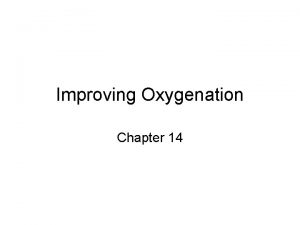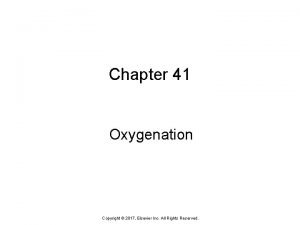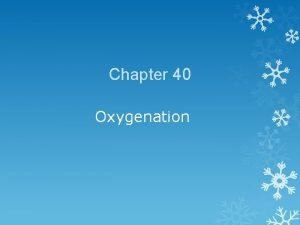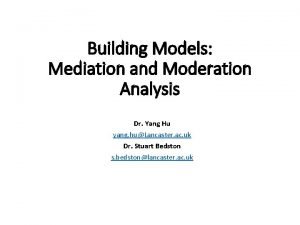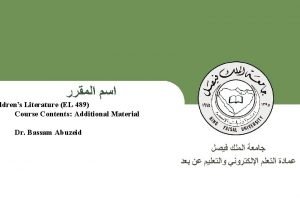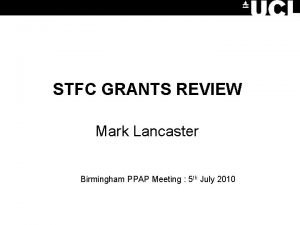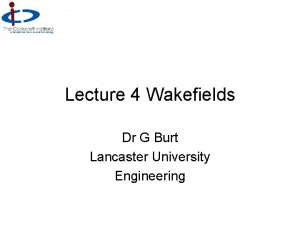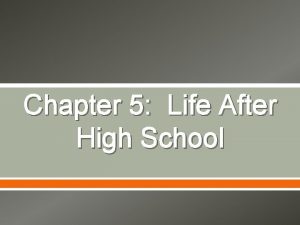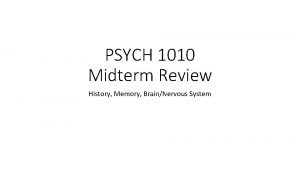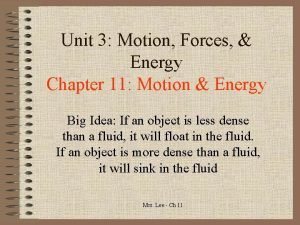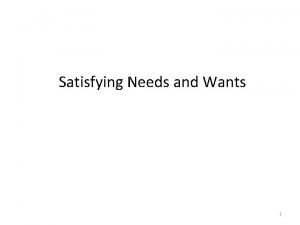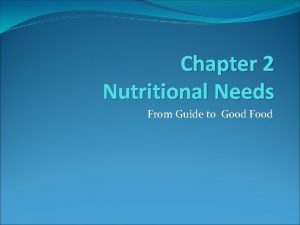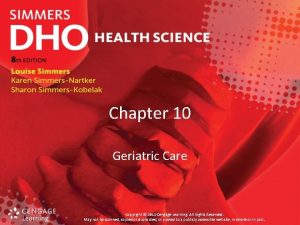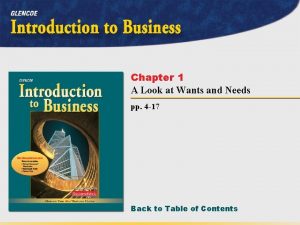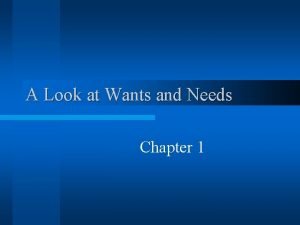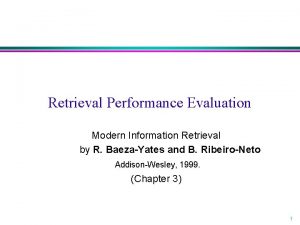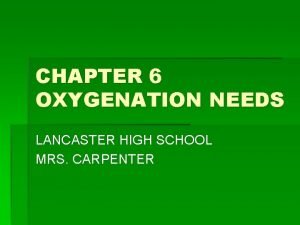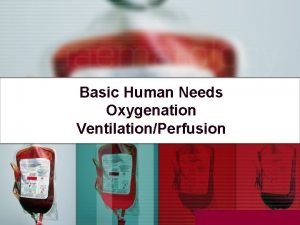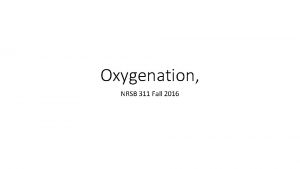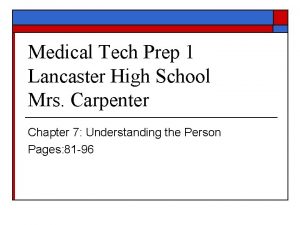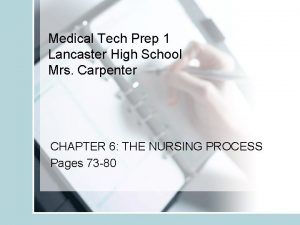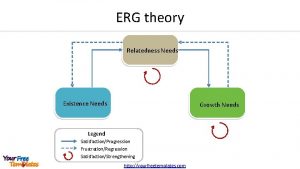CHAPTER 6 OXYGENATION NEEDS LANCASTER HIGH SCHOOL MRS




































































- Slides: 68

CHAPTER 6 OXYGENATION NEEDS LANCASTER HIGH SCHOOL MRS. CARPENTER

OBJECTIVES § FACTORS AFFECTING OXYGEN STATUS § IDENTIFY SIGNS OF HYPOXIA § PERFORM § SETTING UP FOR OXYGEN ADMINISTRATION § COUGH AND DEEP BREATHE EXERCISES § COLLECTING A SPUTUM SPECIMEN § PERFORMING PULSE OXIMETRY

Oxygen status § factors affecting oxygen needs § Respiratory system status § all structures must be intact and functioning § open airway § exchange of o 2 and co 2 in alveoli

FACTORS AFFECTING OXYGEN STATUS § Cardiovascular system function § good blood flow to and from the heart. § narrowed vessels decrease O 2 to cells and cause excess CO 2 in capillaries

FACTORS AFFECTING OXYGEN STATUS § Red blood cell count § RBC’s carry oxygen, insufficient amount causes decrease in the cells. § blood loss reduces # § production by the bone marrow affected by: § poor diet § chemotherapy

FACTORS AFFECTING OXYGEN STATUS § Intact Nervous system § disease of nervous system affect respiration and respiratory muscle function § breathing is difficult

FACTORS AFFECTING OXYGEN STATUS § affects of disease in nervous system: brain damage=decreased rate, depth, and rhythm § narcotics=slowing of respirations § lack of O 2 and CO 2 in the blood=increased respirations to get more

FACTORS AFFECTING OXYGEN STATUS § Aging § muscles weaken and lung tissue less elastic § less strength for coughing to remove secretions leading to pneumonia

FACTORS AFFECTING OXYGEN STATUS § Exercise § demand for O 2 increases § those with diseases have enough at rest but unable to get with increase

FACTORS AFFECTING OXYGEN STATUS § Fever § increases need for O 2 § rate and depth of respirations must increase to meet need.

FACTORS AFFECTING OXYGEN STATUS § Pain § increases need for O 2, rate and depth o § may not be able to do this is chest or abdominal injury or surgery

FACTORS AFFECTING OXYGEN STATUS § Medication § may depress respiratory center in the brain two ways: § respiratory depression=slow, weak respirations, >12/minute § too shallow to get enough air into lungs

FACTORS AFFECTING OXYGEN STATUS § respiratory arrest § =breathing stops § medications that can cause respiratory depression and respiratory arrest

FACTORS AFFECTING OXYGEN STATUS § narcotics § morphine § Demerol § Opium § Heroin § Methadone § depressants § barbiturates

FACTORS AFFECTING OXYGEN STATUS § Smoking § § causes lung cancer and COPD at risk for CAD § Allergies § respiratory system response to allergen § symptoms cause swelling

FACTORS AFFECTING OXYGEN STATUS § Pollutant exposure § pollutants in the air or water cause damage to the lungs. § Nutrition § iron and vitamin B, c, and folic acid to produce new RBC § live only 3 -4 months then are replaced

FACTORS AFFECTING OXYGEN STATUS § Substance abuse § alcohol can depress brain function, decrease cough reflex which increases risk of aspiration

Altered respiratory function § Three processes involved with respiration § if one process is affected the respiratory process is altered.

-types of respiratory alteration § § § § hypoxia deficiency of oxygen in the cells cause cells to function abnormally, and brain function to decrease caused by : illness disease injury surgery affecting respiratory function

signs and symptoms § § § restlessness dizziness disorientation confusion behavior and personality changes § apprehension § anxiety § § fatigue agitation increased pulse rate increased rate and depth R § leaning forward, constantly sitting § cyanosis § dyspnea

§ § § abnormal respirations 12 to 20 times per minute increased in infants and children should be quiet, effortless, and regular both sides of chest rise and fall equally.

§ types of abnormal respirations § tachypnea-above 24/minute § caused by: pregnancy, pain, exercise, airway obstruction, hypoxemia § bradypnea-less than 10 /minute § caused by: drug overdoses, CNS disorders

types of abnormal respirations § § § § apnea hypoventilation hyperventilation dyspnea Orthopnea Biot’s Kussmauls

tests ordered to determine cause § § chest x-ray lung scan Bronchoscopy Thoracentesis § pulmonary function test § arterial blood gases § pulse oximetry* § normal =95%-100% Sputum culture

choosing a site for pulse oximetry. § Based on § condition of the person § breaks in the skin § poor circulation § don’t use fingers or toes § Dark nail polish will distort the reading § Movements can alter the reading § ( tremors, shivering, seizures) § Children attach to sole of foot, palm of hand , finger, toe or earlobe § Older person use ear, nose and forehead d/t poor circulation

reporting pulse oximetry results § *Write as Sp. O 2 § S=saturation, p=pulse, O 2=oxygen § Date and time § Activity of the person § O 2 rate if in use § Reason for measurement § Other observation=difficulty breathing, cyanosis, slow pulse

§ APPLICATION #1 § PROCEDURE: PULSE OXIMETRY

sputum specimens* § § § sputum = secretion from trachea, lungs, and bronchi, expectorated through the mouth saliva is from salivary glands in the mouth “spit” studied for blood, microbes, and abnormal cells. painful and difficult for patient rinse mouth to remove food particles and decrease saliva never use mouthwash, can destroy microbes

special needs-sputum specimens § children § breathing treatments and suctioning to produce sputum § elderly § lack strength to cough up sputum § use of postural drainage (RN or RT)

Oxygenation § Positioning § usually easier in Semi-Fowler’s or Fowlers position § may prefer to sit up in bed or lean on overbed table=Orthopneic position § changes of position q 2 hr to prevent pooling of fluids

Coughing and Deep breathing § removal of mucous and expansion of lungs from the respiratory tract § § § pneumonia atelectasis routine after surgery and pts on bed rest problems to look for § pain § § if post op or injured fear § § breaking open an incision increased pain

Incentive Spirometry § § measure the amount of air a person inhales and increase intake in the lungs. uses § § § post operatively pneumonia respiratory disease bedridden patient elderly that have been hospitalized how often and amount of breaths is determined by RN and facility policy

§ APPLICATION #2 PROCEDURE: COUGH AND DEEP BREATHING PROCEDURE: COLLECT A SPUTUM SPECIMEN

Oxygen Therapy § used for hypoxemia § treated as a drug needs MD order with device and amount

OXYGEN THERAPY § types. § Continuous § never stopped or interrupted for any reason § intermittent § used for symptom relief of chest pain and SOB § PCT is responsible for safe care to pt receiving O 2

oxygen sources § wall outlet § O 2 piped into each room from central oxygen supply § may only use in the room § extension is often needed to reach restroom, etc. § oxygen tank § portable § filled by a company and brought to the facility for storage § gauge to determine how much O 2 in the tank

oxygen sources Oxygen concentrator no source of oxygen is needed § takes oxygen from the air § limits movement of the patient § useless in a power failure § flammability

devices to administer oxygen nasal cannula § two prongs from tubing inserted into nostrils § pressure from ears, nasal irritation face mask § covers nose and mouth with small holes in the sides

devices to administer oxygen partial rebreathing face mask § § § reservoir bag added to the face mask for exhaled air inhales room air, exhaled air and oxygen bag should never totally deflate nonrebreathing face mask § § § prevents exhaled air from entering the reservoir bag inhales air and oxygen from the reservoir bag should never totally deflate

devices to administer oxygen § Venturi mask § precise amount delivered indicated by color code

administering oxygen § special care of patient with mask § communication § skin integrity § food intake

administering oxygen § O 2 delivered in Liters/minute set by RT or RN, should be checked frequently § AP’s may adjust in some states check facility policy § patient name/room number/bed number/device ordered § may assist not responsible for administering O 2

§ APPLICATION #3 PROCEDURE: SETTING UP FOR OXYGEN ADMINISTRATION

Artificial Airways § § § Intubation=insertion of an artificial airway to help it remain patent airway is obstructed d/t disease, injury, secretions, aspiration semiconscious or unconscious state of patient recovering from anesthesia needs mechanical ventilation

care of the patient with artificial airway § *vitals signs checked often § *observe for hypoxia and respiratory distress § *maintain the airway and notify the RN if dislodged § *oral hygiene § *encourage communication § *comfort and reassurance by use of touch and compassion

common airways § oropharyngeal § inserted through the mouth into the pharynx § can be done by RN § nasopharyngeal § inserted through a nostril and into the pharynx § can be done by RN

common airways endotracheal § § § inserted through mouth or nose and into the trachea by a MD or RN with special training using a lighted scope. kept in place by a balloon at the end of the tube tracheostomy § inserted through a surgical incision into the trachea § some types have cuffs that are inflated to keep in place § done by MD

common airways. Tracheostomies § vary depending on the need and the condition of the pt. § permanent § when airway structures are removed d/t disease or trauma § children from congenital defects § temporary § conditions requiring mechanical ventilation § usually removed when the condition returns to normal and pt can breathe on their own.

Trach tubes § made of plastic or metal and consists of three parts § vary depending on their function and need of the pt § outer cannula-secured in place by ties or a Velcro collar around the neck § never removed § inner cannula-inserted through the outer and locked into place § removed for cleaning and mucus removal for patency § obturator-used to insert the outer cannula, then removed § taped to wall or bedside table incase outer cannula comes out


Trach tubes § patient education § § § § no loose gauze or lint on dressings keep the stoma or tube covered when outside no showers don’t get shampoo into the stoma cover the stoma when shaving do not swim wear a medical alert bracelet

Trach tubes Tracheostomy care § cleaning the inner cannula, stoma, and application of clean ties or collar § Why? § removes mucus from the inner cannula to keep airway patent § prevent infection at the tracheostomy site § decrease incidence of skin breakdown

Trach tubes § CALL THE RN IF SIGNS/SYMPTOMS OF HYPOXIA OR RESPIRATORY DISTRESS OCCUR OR THE OUTER CANNULA COMES OUT DURING

Suctioning § for pts who cannot cough or the cough is too weak to remove secretions § the process of withdrawing or sucking up fluid (secretions) § tube connected to a suction source and to a suction catheter inserted into the airway

Suctioning § purpose § removal of secretions that obstruct airflow § decrease incidence of microbes § prevent hypoxia

Suctioning § Suction routes § oropharyngeal and nasopharyngeal § used for person who cannot expectorate after coughing § tracheal § for tracheal tube or tracheostomy tube

Suctioning § § § § oropharyngeal -suction through the mouth and into the pharnyx -a complete cycle involves inserting the catheter, suctioning, and removing the catheter -should be no longer than 10 -15 seconds -type of suction catheter will depend on the secretions *Yankauer *Standard

Suctioning § Nasopharyngeal § - suction catheter is passed through the nose and into the pharynx

Suctioning § Tracheostomy § usually hooked to mechanical ventilation § may be performed by AP § if condition of the patient is stable and not likely to change suddenly § tracheostomy is healed § hypoxia is a risk d/t no oxygen while the suction catheter is inserted § must hyperventilate before suctioning **for infants and children suction is no longer than 5 seconds

§ APPLICATION #5: PROCEDURE: OROPHARYNGEAL SUCTION

Mechanical ventilation § used if can’t breathe on their own or cannot maintain enough oxygen in the blood § use of a machine to move air in and out of the lungs § always have artificial airways § most common: endo tracheal and tracheostomy

Mechanical ventilation § reactions to ventilation § most are seriously ill and may be dying 1. confusion and disorientation 2. fear of the machine 3. fear of dying 4. relief that they are getting oxygen 5. restricted in movements

§ Care of the person on ventilation § See text

Chest tubes § air, blood, or fluid can collect in the pleural space from surgery or injury § pneumothorax § collection of air in the pleural space § hemothorax § collection of blood in the pleural space § pleural effusion § collection of fluid in the pleural space

care of the person with a chest tube § keep the drainage system below the level of the chest. § measure vital signs and report any changes § note and report signs and symptoms of hypoxia § keep connecting tubing coiled on the bed with slack

care of the person with a chest tube § prevent the tubing from becoming kinked § observe chest drainage and report § increased amount § bright red drainage § bubbling activity increase, decrease or stopping

care of the person with a chest tube § § § § record drainage turn and position assist with coughing and deep breathing assist with incentive spirometery note if the system is loose or disconnected observe that chest tube is still in place gauze pad with petrolatum on insertion site stay with patient until the nurse arrives

QUESTIONS ? ?
 Chapter 14 oxygenation test bank
Chapter 14 oxygenation test bank Chapter 41 oxygenation
Chapter 41 oxygenation They are mrs garcia and mrs castro
They are mrs garcia and mrs castro They are mrs garcia and mrs castro
They are mrs garcia and mrs castro Mrs. darling was ___________ of mrs. s.
Mrs. darling was ___________ of mrs. s. Primary needs and secondary needs
Primary needs and secondary needs Satisfaction
Satisfaction Alpha press murray
Alpha press murray Strategic gender needs and practical gender needs
Strategic gender needs and practical gender needs Graves 2000
Graves 2000 What factors affect oxygenation
What factors affect oxygenation Fault in our stars
Fault in our stars Lancaster 2004
Lancaster 2004 Frederick wilfrid lancaster
Frederick wilfrid lancaster Agresso lancaster
Agresso lancaster Ceh lancaster
Ceh lancaster Frederick wilfrid lancaster
Frederick wilfrid lancaster Patricia lancaster
Patricia lancaster Lancaster pedagogo
Lancaster pedagogo Lancaster university employability
Lancaster university employability Maddox rod test procedure
Maddox rod test procedure Mediator vs moderator
Mediator vs moderator Lancaster malattia
Lancaster malattia Elliott lancaster
Elliott lancaster Lancaster univeristy
Lancaster univeristy Stanhope and lancaster 2018
Stanhope and lancaster 2018 Lancaster county gis
Lancaster county gis The crocodile by gareth lancaster
The crocodile by gareth lancaster Taps pyramid model
Taps pyramid model Prof mark lancaster
Prof mark lancaster G2aµ
G2aµ Lancaster turnpike
Lancaster turnpike Lancaster floral design
Lancaster floral design Mentalism vs sanism
Mentalism vs sanism Difference between policy and procedure
Difference between policy and procedure G burt lancaster
G burt lancaster Lancaster 2004
Lancaster 2004 Lancaster boarding house questions
Lancaster boarding house questions Lancaster disability studies conference
Lancaster disability studies conference Crescenta valley high school graduation 2021
Crescenta valley high school graduation 2021 Haltom high school summer school
Haltom high school summer school Mrs elliott a teacher at durham school of the arts
Mrs elliott a teacher at durham school of the arts Www.foundationsu.com cost of living calculator
Www.foundationsu.com cost of living calculator To remember a list of the school supplies she needs
To remember a list of the school supplies she needs Mrs lee chapter 11
Mrs lee chapter 11 Needs and wants examples
Needs and wants examples Entrepreneurs satisfy needs and wants
Entrepreneurs satisfy needs and wants 8.3 human needs
8.3 human needs Diversity and human needs and development
Diversity and human needs and development Chapter 2 nutritional needs
Chapter 2 nutritional needs Chapter 10 geriatric care
Chapter 10 geriatric care Satisfying needs chapter 1
Satisfying needs chapter 1 What are private wants
What are private wants Chapter 8 human needs and human development
Chapter 8 human needs and human development Chapter 1 a look at wants and needs
Chapter 1 a look at wants and needs High precision vs high recall
High precision vs high recall High precision vs high recall
High precision vs high recall Directive behavior and supportive behavior
Directive behavior and supportive behavior High expectations high support
High expectations high support Significant figures
Significant figures Directive behavior and supportive behavior
Directive behavior and supportive behavior Pengertian investasi
Pengertian investasi Public xxx
Public xxx How to write a parody song
How to write a parody song Nackawic high school powerschool
Nackawic high school powerschool Windermere high school graduation requirements
Windermere high school graduation requirements T-stem early college high school
T-stem early college high school Whrhs.org
Whrhs.org Powerschool login waukee
Powerschool login waukee
